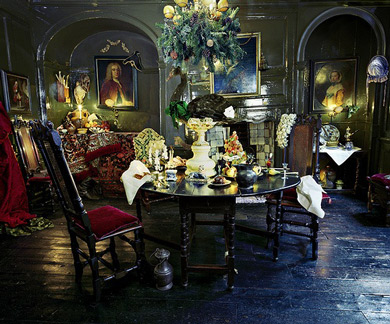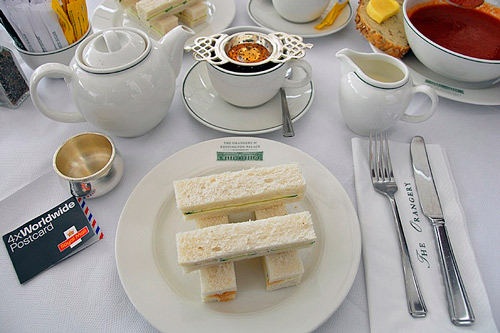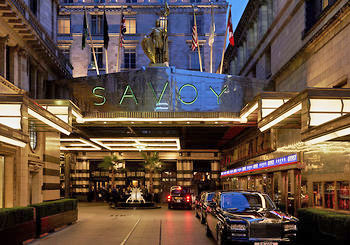A note about the superiority of the English sandwich, featuring recipes along with praise for The London Ritz Book of Afternoon Tea, along with other attractions, one of them less savory.
1. Three hidden keys to the character of London.
On 12 May, The New York Times ran an online article called “Seven Places in Europe We Call Home.” One of the places is London, and the essay within the article subtitled “Ever More to Unlock” on the city is written by Mark Vanhoenacker, an expatriot airline pilot based at Heathrow.
It is a thoughtful piece that discusses his fondness for three sites. The Royal Botanical Gardens in Kew, where “an annual membership” costing only £79 (about $120) transforms the place “into your own everyday neighborhood park,” present a spectacle of architectural as well as natural beauty.
Temple Church, consecrated in 1185 as the London outpost of the Knights Templar, was built to resemble the Church of the Holy Sepulcher in Jerusalem but for the past four centuries has served as chapel to the Inner and Middle Temples at the Inns of Court. It would appear that London lawyers have cultural amenities superior to the competition in Los Angeles or New York, because according to Vanhoenacker the church boasts “one of Britain’s finest” choirs.
Finally he has chosen the Dennis Severs House in Spitalfields, a museum of sorts. It is an eighteenth century time capsule fitted out by Severs, another American expatriot, with “the sights, sounds and--yes--smells of bygone ages.” Coal burns in the grate (they must have got an environmental zoning variance), lemon zest perfumes the air aside the service of tea and “the contents of the chamber pots are all too authentic.” One could be forgiven for wondering who supplies the shit, but regardless, the late Mr. Severs was some stickler.

2. The route to this man’s heart….
Vanhoenacker sounds like a stickler too, but for considerably less dubious delights. He likes the Kew Greenhouse Café, hard by the Botanicals, where, he confides, “I started to fall in love with London.” One of the attractions that stoked the affair was something simple from the café. There, he “learned why English sandwiches are generally so tasty (it’s the quality of the Cheddar, and the quantity of the butter)” and the lesson is sound.
English cooks also do something with the cheese in their sandwiches, something other cooks never appear to do. They shred it, which gives a big boost to the flavor profile of that superior Cheddar. Even ordinary public houses sell good sandwiches--the White Hart in Oxford even includes a crawfish sandwich on its printed menu, try to find that outside New Orleans in the United States--and they tend to be simpler, plain in the sense that the Amish would admire, than their elaborate counterparts in North America, where the architecture of their ingredients can transcend the Baroque all the way to Mannerist.
3. An English origin.
Then again few Americans have familiarity with anything English when it comes to the sandwich, its construction or origin. One friendly proprietor of the excellent Ten Sandwiches in Watch Hill, Rhode Island, had been taken aback at the notions not only that English recipes for sandwiches abound, but also that they look a lot different from anything American. Equally unknown to him was the notion that the English invented the thing and the term, named of course in the eighteenth century for the Fourth Earl of Sandwich. His favorite was salt, or corned, beef.
In general an English sandwich is more delicate too, an outlier for so otherwise robust a cuisine, and the most delicate of all has often been parodied as a cliché of English effeminacy. The scoffers are fools, because nothing in summer beats a cucumber sandwich, although tomato sandwiches at the height of the harvest do stand in equal stead.
4. Exemplars.

No better instruction for construction of a cucumber sandwich exists than the one provided by Helen Simpson in The London Ritz Book of Afternoon Tea, an appropriately slender book that appeared back in 1986. As Simpson says, the slight sandwich “is the aristocrat of the teatable; cool, gracious and impeccable.” The Ritz Book recipe captures its “utter simplicity:”
“Peel a cucumber and slice it into transparencies on the slicing side of a grater, or by adroit use of a potato peeler. Sprinkle these see-through discs with a little vinegar and salt. After half an hour, drain away the excess cucumber juice by shuffling the slices in a sieve. Cover a slice of lightly buttered paper-thin brown bread with two layers of cucumber, and top with another slice of bread. Apply firm but delicate pressure with the palm of the hand. Slice off the crusts, and cut into three rectangles. Pile these neatly on a porcelain serving plate, and cover with a lightly dampened cloth until tea is served.” (Simpson 19)
The language deployed by Simpson is as appealing as her sandwich, carefully crafted prose that leaves no doubt what to do. Use of the peeler must be ‘adroit,’ the slices ‘see-through,’ the bread ‘paper-thin,’ or, elsewhere and even better, “slim as a leaf.” The careful application of pressure should be ‘firm but delicate,’ while the dampened cloth keeps the composition content.
Simpson does not say so, but malt or cider vinegar will have been the traditional choice. Champagne vinegar, however, adds a delicate zip.
Other English sandwiches are nearly as simple and similarly sublime. Simpson’s watercress sandwich is one of the most appealing among them. It is, as she asserts, “bright, peppery, crisp and full of iron” and is easy to build. “Butter rough rye bread with salty butter and pile a slice high with fresh watercress. Press another slice on top until the contents creak.” At that point cut the sandwich in two; “the dark green leaves burst out at the seams.” (Simpson 24)
One of her “two perennial favourites” from Clubland substitutes brown bread for rye, ditches the butter for the thinnest film of Gentleman’s Relish, accurately described as “a sharp dark paste of eye-watering strength, made from anchovies, butter, herbs and spices,” along with mustard to accompany the cress. (Simpson 20)

An unlikely star sparkles in a sandwich described in Taking Tea at the Savoy, another booklet like Simpson’s, this one from 1999 by Anton Edelmann, the celebrated ‘Maître Chef des Cuisines’ whose tenure at the Savoy spanned the turn of these latest two centuries.
As Edelmann’s title infers, the tack on tea taken at the Savoy is less Anglocentric than the one taken farther west at the Ritz but the sandwich in question, a homely combination of cream cheese and Marmite on toast, could not have originated in any other country. Putting on one side any misgiving about the expenditure of Savoy level funds for something so cheap to assemble, it is a sandwich to sample for even the most fearful skeptics on the subject of Marmite. Smear one slice of the toast with Marmite and a second with cheese, lightly press the two together and excise the crusts. That is all it takes, and this marriage of Marmite to cream cheese creates an ineffably English tension between the acrid extract and unctuous cheese. Better than tea for this, however, would be beer.
On that final note, it is a relief to report that the Kew Greenhouse Café, in contrast to so many tearooms, sells spirits, wine and beer, although all of the beers are bad, bland lagers brewed under license by the abominable behemoths of the industrial brewing conspiracy.
More recipes for sandwiches appear in the practical.

